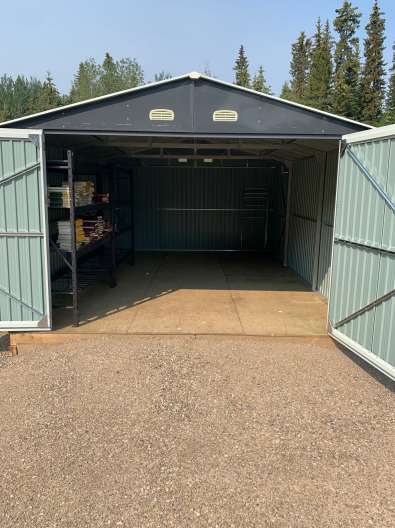- Log in to post comments

In part one of Shred Sheds, we learned that a Share Shed can help communities reduce and reuse unwanted items through a local share program, similar to a lending library.
If managed properly, a Share Sheds can provide an excellent opportunity for a community to benefit from an eco-friendly trading post.
A successful model for a Share Shed requires a few key components; committed volunteers or assigned staff members, well-defined operating hours and guidelines and the importance of location.
Community Volunteers and Advocates
While it seems like a Share Shed should be able to operate on its own, the complexities of reusing items need a community advocate or leader, who has some knowledge recycling, to organize and review items brought to a Share Shed.
The role of the Share Shed volunteer would be to ensure a Share Shed is organized, opens and closes per set operational hours, keep inventory rotating and properly disposing items that have been lingering and therefore presumed unusable by the community. A Share Shed Advocate would also have some communications role with the community in sharing information such as new items, open and close times, and general operations.
Finding keen and willing volunteers to lead and manage a Share Shed is key to its success. Like all volunteer positions, it can be hard, but not impossible, to find an advocate who wants to tackle this type of project.
Operational Hours and Policies
Although not mandatory, operating hours for drop-off and taking of items helps the community and the volunteer members with parameters on how a Share Shed operates. Leaving a Share Shed open at all hours can lead to issues such as noise complaints and dumping of materials that are not appropriate.
Set hours where the community can drop off materials, just like at local thrift stores, allows Share Shed volunteers to receive goods and turn away items that are not suitable. Accepting items that are deemed usable is vital for a community to want to participate and support a Share Shed.
It is also a good idea to create Share Shed policies that explains its purpose, hours of operation and what can and cannot be put in a Share Shed, defined in part by local disposal and recycling options. These policies will help ensure that a Share Shed does not become a dump zone.
Unwanted dumping can be discouraging for the volunteers and takes time and money to clean up. A good way to avoid unwanted dumping is to organize a Spring Clean Up event where true waste can be properly collected and disposed.
A Spring Clean Up event is a not a free proposition as transport and disposal will have to be arranged and likely cost money. However, an event may be a good addition to a local Waste Management schedule and strategy for the community to allow for a communal disposal day. Partnering with a local charity as fund raiser to bring awareness the charity and collect funds is another idea in helping offset some of the waste management expense.
Location
Lastly, finding suitable and convenient location of the Share Shed is critical. Communities can decide what location works best. In some case a Share Shed be located its own unique building or shed or an area like an underground parking lot. There are many types of locations that could support the concept of a Share Shed. Determining the best location depends on what the community needs, how easy it is to access and how like-minded a community is in supporting communal recycling.
Start a Share Shed Today!
There are many hurdles to overcome when starting a Share Shed. The time, money and effort needed is not to be overlooked. However, the benefits of a Share Shed are good for our environment, and can bring a community together. There is always room for new and creative ways to help our environment and further our sustainability goals, a Share Shed could be part of this effort.
